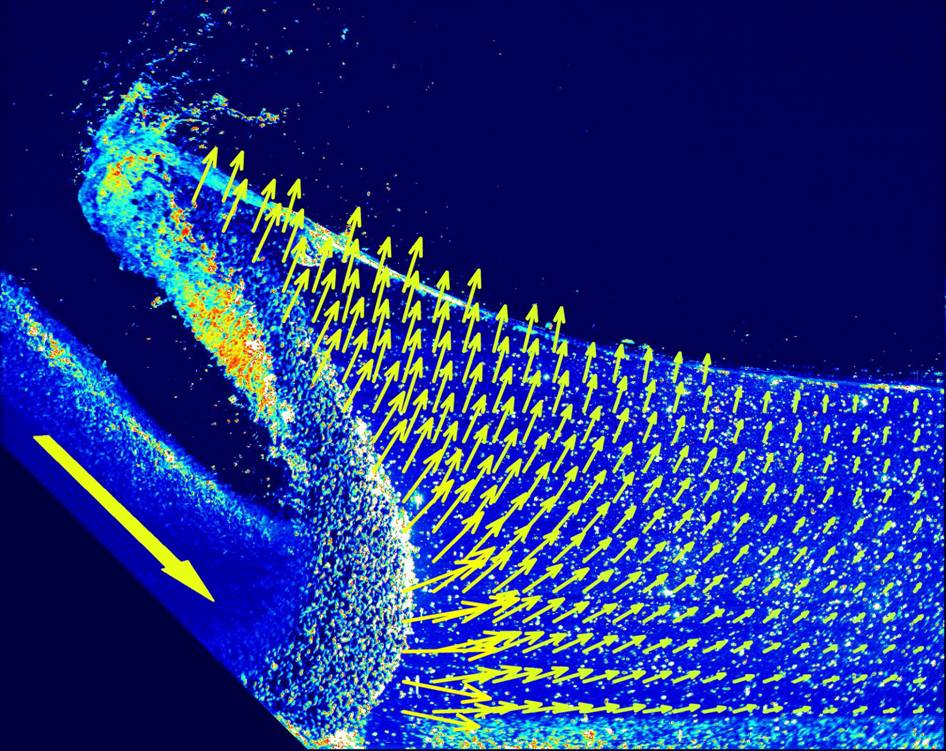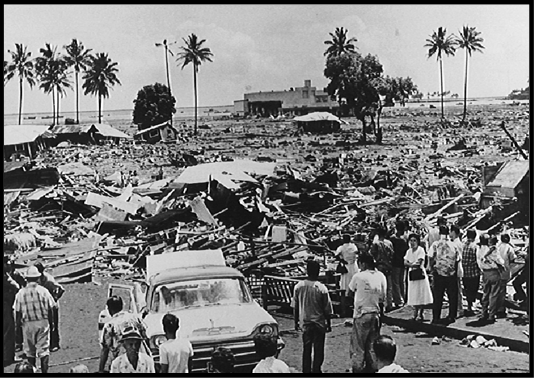The Destructive Force of Tsunamis

| 
|
In the U.S. and other Pacific Rim nations, earthquakes often create tsunamis that
can cause considerably more damage and deaths than the seismic ground motion by itself.
A tsunami is a series of water waves of extremely long wavelength, generated by an
impulsive geophysical disturbance that displaces the water within a short period of time.
Large tsunamis are generated primarily by seismic fault displacements of the sea floor,
but are also triggered by landslides, volcanic eruptions, and even the impact of
meteorites or asteroids. Tsunamis can be generated in harbors, lakes, and rivers,
as well as the ocean. These events cause major natural disasters, primarily in the
Pacific but also in Caribbean, Atlantic, and Mediterranean regions. In the past decade,
16 lethal tsunamis have occurred in the Pacific, resulting in more than 6,000 fatalities .
a number comparable to all fatalities caused by all earthquakes in the same period.
Ironically, the normally quiescent coastal areas that are struck by tsunamis are also
preferred sites for human habitation.
A tsunami.s genesis is unpredictable and unobservable, and it can propagate more than
several thousand kilometers without significant loss of energy. Tsunamis are difficult
to detect from the air or even aboard a ship in the open ocean, as the water level rises
only slightly and for only a few minutes or tens of minutes. They travel through open
ocean at high speeds and over great distances with only limited loss of energy.
That unabated force is what makes tsunamis so devastating.
It is extremely difficult to predict accurately where or how a tsunami will impact the
shore. The coastal manifestation of a tsunami can be rapidly rising or falling water,
a series of breaking waves, or a bore. Reefs, bays, entrances to rivers, undersea features,
and the near-shore region of the beach all modify the tsunami as it approaches the shoreline.
The first wave may not always be the largest; in some cases, the water level first
falls significantly, exposing the bottom of the bay or beach, to be followed by a high wave.
The tsunami.s destructive pattern is also difficult to predict. One coastal area may see
no damaging activity at all, while waves are large and violent in a neighboring area.
Flooding can extend inland by half a mile, covering large expanses of land with water
and debris. Tsunamis may reach a vertical height onshore (called the runup height) of
100 meters above sea level.
Tsunamis are more frequent and more destructive than most people realize. During this
century, more than 100 tsunamis have been observed in the United States alone. The 1946
Aleutian tsunami, the 1960 Chilean tsunami, and the 1964 Alaskan tsunami were the three
most destructive in U.S. history. In 1946, an Aleutian earthquake (Richter scale 7.3)
generated a catastrophic tsunami that, after traveling about 5 hours, attacked the Hawaiian
Islands and killed 159 people, with recorded property damage of $26 million. The 1960 tsunami
struck the Hawaiian Islands after travelling14 hours across the Pacific Ocean from its
generation region near the Chilean coast. It caused devastating damage not only in Chile
(more than 1,000 people were killed and the total property damage from the combined effects
of the earthquake and tsunami was estimated as $417 million) but also at Hilo, Hawaii, where
61 deaths and $23.5 million in property damage occurred. The 1964 tsunami was triggered by
the Prince William Sound earthquake (Richter scale 8.4); it killed 106 people and caused $84
million damage in Alaska alone.